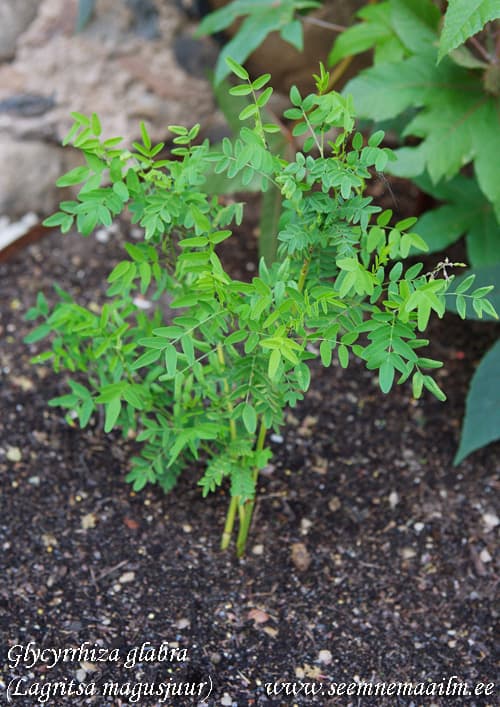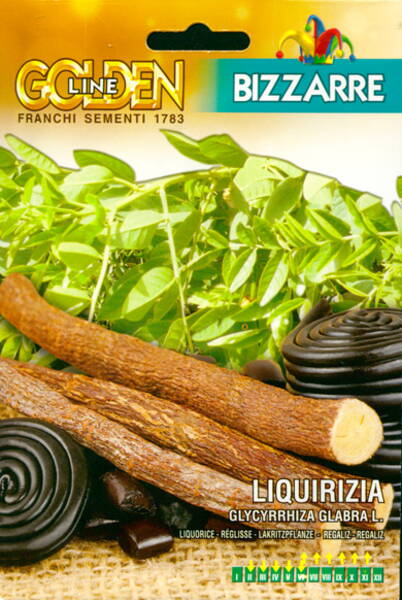Attractive edible plant up to 1.2 m high. Rhizomes have a delicate aroma and a sugary-sweet taste. Preparations from licorice are prescribed for poisoning, infectious diseases. Improves the functioning of almost all organs. Slows down the course of AIDS. Used for the production of carbonated water, kvass, sweets, marshmallows.
1,0 g = 100-110 seeds.
Botanical characteristic. Licorice naked (Hlycirrhiza glabra L.) is a perennial rhizomatous herbaceous plant of the legume family (Fabaceae). The root system is powerfully developed, it consists of the main root, up to 4 m long, deeply penetrating into the soil, and horizontally spreading rhizomes, forming shoots and roots of the second and subsequent orders. Stem up to 150 cm high, erect, shortly pubescent, simple, rarely branched. The leaves are alternate, pinnate, oblong-elliptical, on shortly pubescent glandular petioles.
The flowers are pale purple, collected in a loose brush. The fruit is an oblong, straight or slightly curved bean, densely covered with glandular spines. Seeds are kidney-oval, from grayish-green to brown.
Biological features. Seeds remain viable for up to ten years. With seed propagation, the plant blooms in the third year of life. Flowering in July, fruiting in August - September. Licorice is highly drought tolerant. Prefers soils rich in lime. But it is grown on a wide variety of soils: chernozem, loamy, sandy loam and on loose sands with a shallow groundwater level, as well as on saline ones. On poor, infertile soils, licorice grows well due to the ability to accumulate nitrogen from the air with the help of bacteria. It has been growing in one place for more than ten years.
Reproduction and agricultural technology. Propagated by seeds, vegetatively and rhizomatous cuttings. Place the licorice in the field wedge. The soil is cleared of weeds and the main plowing is carried out to a depth of 25-27 cm. In the spring, the field is harrowed, cultivated and rolled before sowing. Under plowing, superphosphate and potassium salt are applied at 150-200 kg/ha, and under cultivation - ammonium nitrate-100-150 kg/ha. Sow in April in a wide row. The row spacing is 70 cm, the seeding rate is 3-4 kg/ha, the seeding depth is 1-2 cm. Plant care consists in keeping the soil in a loose and weed-free state, fertilizing with mineral fertilizers.
Harvesting and storage of raw materials. Licorice is harvested in the third year and in subsequent years. The rhizome with roots is dug up in spring or autumn, washed, cut into pieces and dried in the open air. Raw materials are stored in bales or bags.

.jpg)
Eng.: Common licorice, common liquorice, cultivated licorice, licorice root, Russian liquorice, Spanish liquorice, sweet licorice, sweetwood, true licorice. Suom.: Lakritsijuuri, lakritsi. Sven.: Lakritsrot, äkta lakrits. Bot. syn.: Glycyrrhiza glandulifera, Glycyrrhiza pallida Boiss., Glycyrrhiza violacea Boiss., Liquiritia officinalis Moench.











